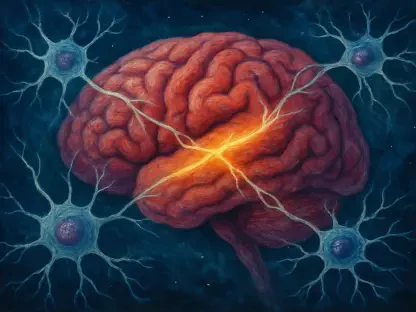Picture the intricacies hidden within the cell—each nucleus containing a vast genome map, intricately folded into a complex three-dimensional (3D) shape. How does this hidden architecture influence the very essence of life, determining which genes are silent or expressed?
The Importance of 3D DNA Structure
DNA is often visualized as a simple, continuous sequence of nucleotides. Yet, this represents only a fraction of its complexity. While the linear sequence provides the list of genetic instructions, the 3D folding of DNA is crucial for its complete functionality. Recent studies reveal that the spatial configuration of DNA has significant implications for gene regulation and health. The 3D structure’s disruptions can lead to diseases like cancer and developmental disorders, showcasing its vital role in genetic expression.
Understanding the Structure: Beyond the Linear Sequence
DNA does not simply lie as a static thread; it twists, bends, and loops into a structure called chromatin. Within this framework exist topologically associating domains (TADs), essential for understanding gene expression. These TADs organize DNA sequences into distinct regions, ensuring regulatory elements can enact control over nearby genes while remaining isolated from others. Imagine these domains as clusters of activity, akin to different types of potatoes—each shape corresponding to various levels of genetic activity.
Insights from Cutting-Edge Research
Research conducted by experts at Sanford Burnham Prebys and their global peers has illuminated the 3D architecture of DNA with unprecedented clarity. Their work highlights how chromatin’s form influences gene activity. By examining TADs, researchers found that DNA regions near the surface of these formations are more active, being more accessible to cellular signals. This finding draws an intriguing parallel: just as a potato’s exterior is more exposed than its core, the 3D organization of DNA affects how actively genes are transcribed. Insights from this study provide a deeper understanding of how cellular functions are orchestrated, paving the way for novel medical explorations.
Practical Implications and Future Horizons
The implications of these discoveries extend far beyond academic interest. Understanding the 3D structure of chromatin could revolutionize the approach to diagnosing and treating various diseases, including muscular dystrophy and potential muscle regeneration therapies. Further research will likely leverage these findings to investigate how genomic configurations impact cellular processes, potentially leading to breakthrough treatments. The potential for innovation in treatment pathways through new genomic data appears boundless as exploration into the 3D genome deepens.
A New Frontier in Genetic Research
The exploration of DNA’s 3D architecture has fostered a new appreciation for the complexity inherent in genetic material. This area of research moved beyond mere sequencing to decode the profound implications of spatial structure in gene regulation. As scientists delved deeper, they unearthed opportunities to transform how disease mechanisms were understood and addressed. The path forward involved embracing this intricate science’s possibilities, continually expanding the horizon of what genetic research could achieve.









